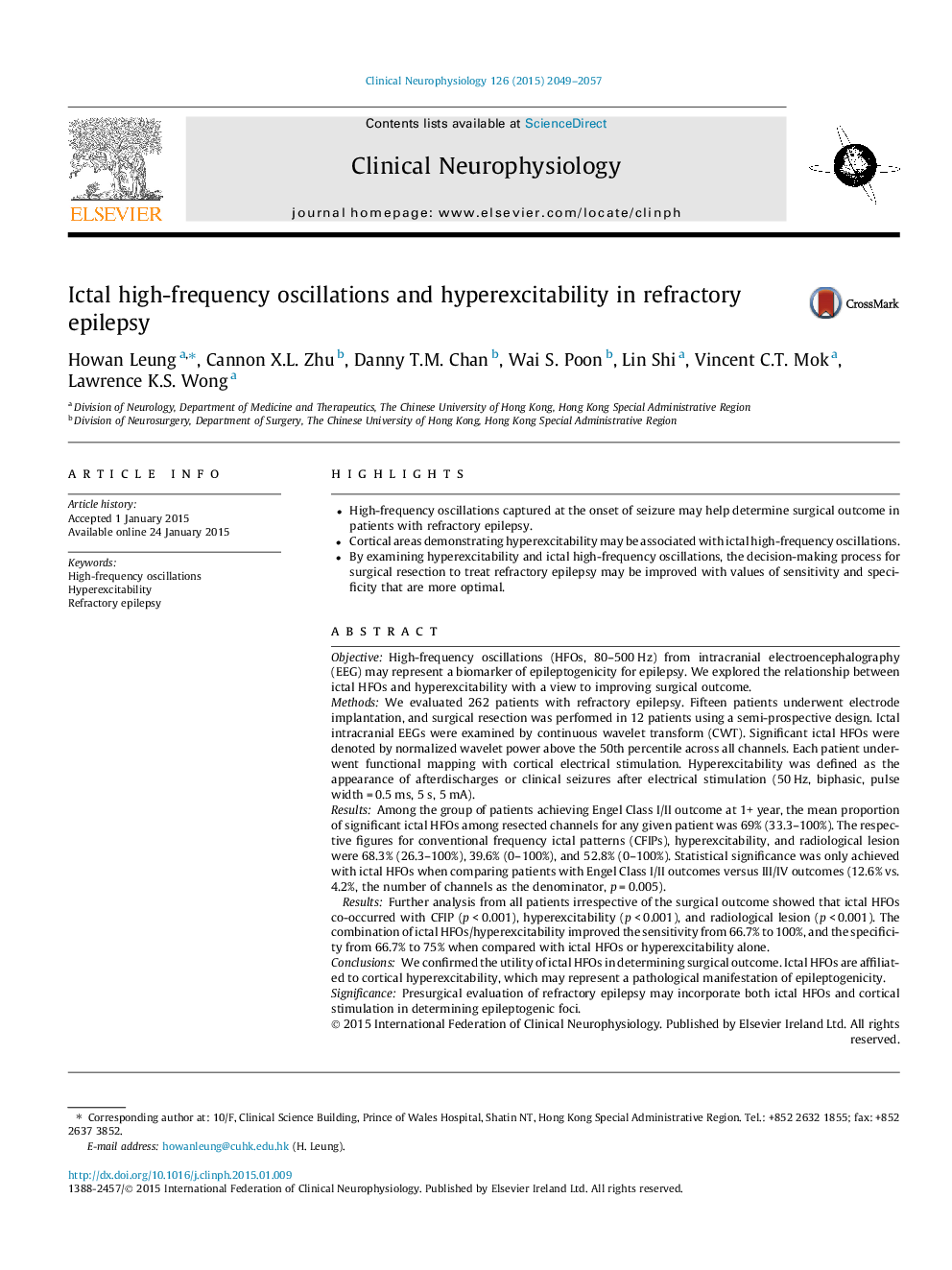| Article ID | Journal | Published Year | Pages | File Type |
|---|---|---|---|---|
| 6007771 | Clinical Neurophysiology | 2015 | 9 Pages |
â¢High-frequency oscillations captured at the onset of seizure may help determine surgical outcome in patients with refractory epilepsy.â¢Cortical areas demonstrating hyperexcitability may be associated with ictal high-frequency oscillations.â¢By examining hyperexcitability and ictal high-frequency oscillations, the decision-making process for surgical resection to treat refractory epilepsy may be improved with values of sensitivity and specificity that are more optimal.
ObjectiveHigh-frequency oscillations (HFOs, 80-500 Hz) from intracranial electroencephalography (EEG) may represent a biomarker of epileptogenicity for epilepsy. We explored the relationship between ictal HFOs and hyperexcitability with a view to improving surgical outcome.MethodsWe evaluated 262 patients with refractory epilepsy. Fifteen patients underwent electrode implantation, and surgical resection was performed in 12 patients using a semi-prospective design. Ictal intracranial EEGs were examined by continuous wavelet transform (CWT). Significant ictal HFOs were denoted by normalized wavelet power above the 50th percentile across all channels. Each patient underwent functional mapping with cortical electrical stimulation. Hyperexcitability was defined as the appearance of afterdischarges or clinical seizures after electrical stimulation (50 Hz, biphasic, pulse width = 0.5 ms, 5 s, 5 mA).ResultsAmong the group of patients achieving Engel Class I/II outcome at 1+ year, the mean proportion of significant ictal HFOs among resected channels for any given patient was 69% (33.3-100%). The respective figures for conventional frequency ictal patterns (CFIPs), hyperexcitability, and radiological lesion were 68.3% (26.3-100%), 39.6% (0-100%), and 52.8% (0-100%). Statistical significance was only achieved with ictal HFOs when comparing patients with Engel Class I/II outcomes versus III/IV outcomes (12.6% vs. 4.2%, the number of channels as the denominator, p = 0.005).Further analysis from all patients irrespective of the surgical outcome showed that ictal HFOs co-occurred with CFIP (p < 0.001), hyperexcitability (p < 0.001), and radiological lesion (p < 0.001). The combination of ictal HFOs/hyperexcitability improved the sensitivity from 66.7% to 100%, and the specificity from 66.7% to 75% when compared with ictal HFOs or hyperexcitability alone.ConclusionsWe confirmed the utility of ictal HFOs in determining surgical outcome. Ictal HFOs are affiliated to cortical hyperexcitability, which may represent a pathological manifestation of epileptogenicity.SignificancePresurgical evaluation of refractory epilepsy may incorporate both ictal HFOs and cortical stimulation in determining epileptogenic foci.
